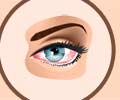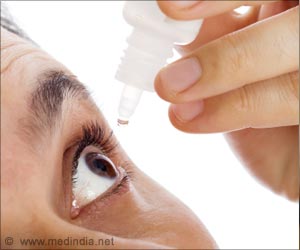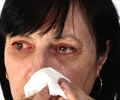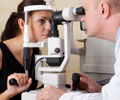- Experts highlight the strategies that blend procedural and pharmacological therapies to optimize dry eye disease treatment
- The advancements focus on the importance of tailoring treatments and combining therapies as per individual patient needs
- Dry eye disease, or dysfunctional tear syndrome, is a chronic eye condition that occurs due to improper tear production, or due to its poor quality
Combining Procedural and Pharmacological Therapies in Dry Eye Disease
Go to source).
Navigating Dry Eye Disease
Dry eye disease is a chronic condition of the eyes characterized by inadequate tear production, poor tear quality, or rapid evaporation of tears which leads to discomfort, irritation, inflammation, and potential damage to the eyes (2✔ ✔Trusted SourceDry Eye Disease
Go to source).
Dry eye disease poses challenges for both clinicians and patients, leading to vision and quality of life issues, despite being often under-recognized, misdiagnosed, and under-treated. It is also known as dysfunctional tear syndrome (2✔ ✔Trusted Source
Dry Eye Disease
Go to source).
The eye's tears consist of three layers: oily, watery, and sticky. When the meibomian glands (located inside the eyelids, and the openings on the edge of the eyelids) that produce the oily layer malfunction, the watery layer dries, which leads to Meibomian gland dysfunction (MGD) (3✔ ✔Trusted Source
Meibomian gland dysfunction (MGD)
Go to source).
MGD, a chronic eyelid condition causing irritation, inflammation, and ocular surface disease, leads to dry eye disease (4✔ ✔Trusted Source
Current and Emerging Therapeutic Strategies for the Treatment of Meibomian Gland Dysfunction (MGD)
Go to source). With around 20 million in the US (344 million worldwide) affected, addressing its treatment becomes crucial for both young and old adults (2✔ ✔Trusted Source
Dry Eye Disease
Go to source).
Revolutionizing Dry Eye Care
Conventional therapies for dry eye include artificial tears, warm compresses, and lid hygiene using baby shampoo (4✔ ✔Trusted SourceCurrent and Emerging Therapeutic Strategies for the Treatment of Meibomian Gland Dysfunction (MGD)
Go to source).
However, with deeper insights into dry eye's multifaceted causes, treatments now target underlying deficiencies and inflammation rather than just temporary symptom relief (5✔ ✔Trusted Source
Advances in Dry Eye Disease Treatment
Go to source).
Topical medications aim to address deficient growth factors and reduce ocular surface inflammation, while innovative devices focus on meibomian gland dysfunction and stimulate tear production via the nasolacrimal reflex pathway (5✔ ✔Trusted Source
Advances in Dry Eye Disease Treatment
Go to source).
Hence, experts were interviewed about their approach to using diverse dry eye technologies and procedures, and how they would integrate these methods with pharmacological therapies.
Optimal Fusion for Dry Eye Relief
One of the experts, Kelly K. Nichols, OD, MPH, PhD, FAAO weighs meibomian gland treatment's importance alongside other therapies, acknowledging challenges in financing and discussing patient care decisions confidently.Another expert, Crystal Brimer, OD emphasizes effective patient education, guiding them through their treatment options and involving them in decisions, alleviating concerns, and ensuring they comprehend the plan for their eye care journey as crucial for effective care.
“And the other thing that I like to mention is that there's no guarantee that at-home procedures are going to be an inexpensive route because we don't know what the costs are for the drugs, and we still need all these collateral palliative treatments that go along with it,” says the other expert, Crystal Brimer, OD.
“That is a great approach. Thank you so much for sharing that. It's helpful. And I just loved how you say you write it out for the patients to take home and think about it. That also seems helpful,” appreciates Dr. Bill B. Trattler.
Hence, optimal care for dry eye disease involves a comprehensive approach that combines both tailored procedural and pharmacological therapies. This would offer promising avenues for effectively managing the condition, and ensuring improved quality of life for patients.
References:
- Combining Procedural and Pharmacological Therapies in Dry Eye Disease - (https://www.ophthalmologytimes.com/view/combining-procedural-and-pharmacological-therapies-in-dry-eye-disease)
- Dry Eye Disease - (https://www.aao.org/eyenet/article/dry-eye-disease)
- Meibomian gland dysfunction (MGD) - (https://www.aop.org.uk/advice-and-support/for-patients/eye-conditions/meibomian-gland-dysfunction)
- Current and Emerging Therapeutic Strategies for the Treatment of Meibomian Gland Dysfunction (MGD) - (https://pubmed.ncbi.nlm.nih.gov/26130187/)
- Advances in Dry Eye Disease Treatment - (https://www.ncbi.nlm.nih.gov/pmc/articles/PMC6986373/)
Source-Medindia
















